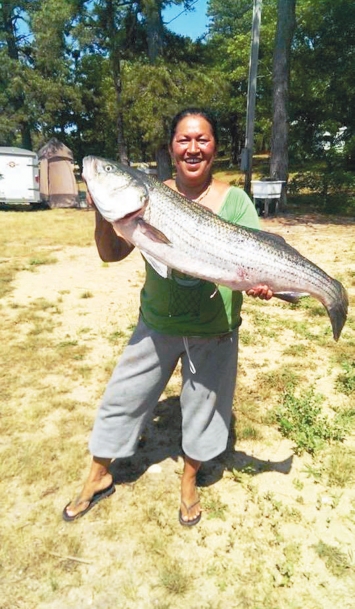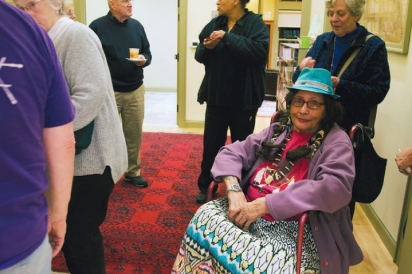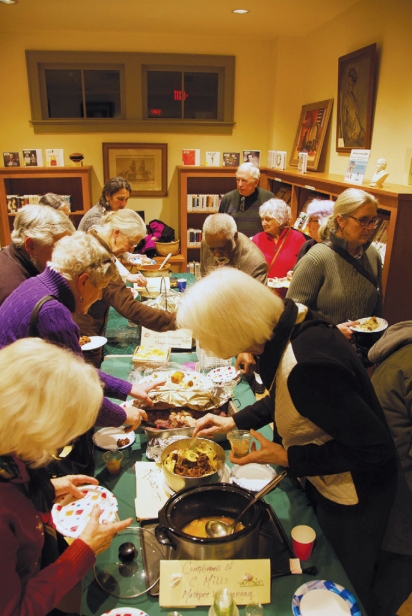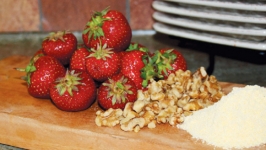Back to Our Roots: Wampanoag Chefs Share Their Seasonal Cuisine
Braised fiddleheads, seared striped bass and sunchokes puréed with duck fat. Braised ramps and asparagus with bay scallops in a maple syrup glaze. Smoked bluefish hash with poached eggs. Mussel, clam and lobster stew. This menu would be considered au courant at any fine dining establishment in New England. But it’s basically what Native American tribes in the region have eaten for centuries, with a slightly modern twist.
Eating locally and with the seasons is intrinsic to Native American life. While many Cape Cod residents are rediscovering the joys of foraging or growing their own food, members of the Mashpee Wampanoag tribe were doing it before it was considered cool.
“We were taught as little kids how to forage for whatever is in season, like ground nuts or wild berries. My dad would take us shellfishing all the time. As long as that water was warm enough to get in, we had plenty to eat,” remembers Sherry Pocknett, a chef and member of the Mashpee tribe.
Pocknett and her brothers grew up eating the deer and raccoon their father, Vernon Pocknett, brought home from hunting trips. They developed a taste for snapping turtles and eels at a young age. She has fond memories of harvesting herring with her grandmother, Delscena Hendricks, preserving the roe, frying or pickling the backs, and using the rest of the fish as fertilizer in the garden.
As she got older, Pocknett helped her dad with clam bakes, and at some point nearly everyone in her family worked at The Flume, a restaurant on the banks of the Mashpee-Wakeby Pond owned by her uncle, Chief “Flying Eagle” Earl Mills, Sr.
By the 1980s, Pocknett’s side business catering for The Flume became so popular she turned it into a mobile food truck. Named Sly Fox Den in homage to her father, Pocknett served up delicacies like quail, turtle soup, and rabbit pie at festivals and pow-wows across the East Coast. Later, she brought her expertise to the Pequot Museum & Research Center in Mashantucket, Connecticut, transforming the burgers-and-fries cafeteria menu to one reflecting native heritage.
“People loved it. They were curious, because they’ve never seen things like frog legs before,” said Pocknett. “It’s all about the simplest ingredients. You don’t have to do a lot to make it taste good.”
That connection with natural bounty – and the need to protect it – was just part of life in Pocknett’s family, and for the entire tribe. “We are the caretakers of the land and the water. We need to give back to Mother Earth, who sustains us. If we don’t do that, we won’t be able to eat,” says Pocknett, recalling her early lessons in ecology.
But not all of us have learned those lessons. Decades of overharvesting and overdevelopment have decimated herring populations – not to mention other fish – across New England. Since 2005, Massachusetts placed a moratorium on taking herring, which migrate each spring from the ocean through a maze of rivers and man-made runs to spawn in the inland ponds where they were born. Due to the advocacy of hunters and fishermen like Pocknett’s father, members of indigenous tribes have the right to fish for herring and other species without restrictions on size or number, but they are frequently harassed for doing so.
While the past abundance is gone, catching herring is still a rite of passage for Pocknett – who spent the spring teaching her grandchildren to make nets – and for Joan Avant, a former tribal president and director of Indian Education at Mashpee Public Schools.
“I can remember going down to the herring runs at Quashnet River, Santuit River, or Mashpee River. You didn’t even need a net, the fish were so thick. You’d just grab them by the handful, give it a blessing, and get the next one,” she recalled. At a dinner lecture at the West Falmouth Library in February, Avant (and her tribal fishermen friends) shared some of this bounty with attendees, many of whom had never tried herring before.
“To Mother Earth, provider of our four seasons, we thank you. To our ancestors who taught us how to hunt, catch fish, and grow gardens, we thank you,” said Avant in a prayer before the buffet of fried herring, rabbit and oysters, venison stew, roasted duck, quahog chowder, Three Sisters Rice (wild rice, corn, squash and beans), cranberry bread, and a sweet apple-blueberry stovetop cobbler called “slump.”
Many Americans associate this kind of thanks around a shared meal with Thanksgiving. But in the Wampanoag traditions, a meal in celebration of the season’s bounty happens with the new moon harvest, says Pocknett, starting with strawberries, followed by green corn and cranberry, which the Wampanoag call sasawumun.
For Pocknett, the most important part of preparing native food is gathering the ingredients. To cook in quantity and ensure safety, she sources her meat from a wild game distributor, but she forages and grows as much of her produce as she can.
“Ground nuts are not as common as they used to be because people don’t know when to harvest them. But if you dig them in the fall, they’ll come back,” Pocknett says of the tuber, which she recommends as a good source of vitamins that can be fried or mashed like a turnip. Another favorite is sassafrass, says Pocknett, conjuring up the sweet woodsy smell of roots that can be brewed into a delicious tea.
Her experience with introducing people to native food, as well as the cultural class she taught to children at the Wampanoag tribal center, inspired Pocknett to add education to her offerings. This fall, she and her family are planning to open Sly Fox Den Restaurant in Preston, Connecticut, serving authentic indigenous cuisine. The menu branches out from the food truck’s offerings to include wild quail, buffalo sausage, lobster fritters and smoked salmon and shellfish. Located on an estuary on Poquetanuck Bay, the waterfront property is a natural fit for a small oyster farm, says Pocknett. Through a grant from the New England Grassroots Environment Fund’s Eastern Woodlands Rematriation Collective, the property now features a Three Sisters Garden, where Pocknett plans to grow most of the restaurant’s vegetables. In addition, Pocknett’s family and members of the local Pequot tribe are planning a native village with interpreters to share Eastern Woodlands tribal traditions with the next generations.
“We have to sustain our life ways, our recipes, when and how we gather things. If you don’t practice the life ways, you lose them,” says Pocknett. “We’re just going back to our roots on how we survived and what we were taught.”









